I host public outreach events about the science and research taking place everyday on the International Space Station. A favorite event of mine is called "Story Time From Space", where astronauts onboard the ISS read children's stories featuring space science and STEM topics. (Opinions are my own.)
Don't wanna be here? Send us removal request.
Text
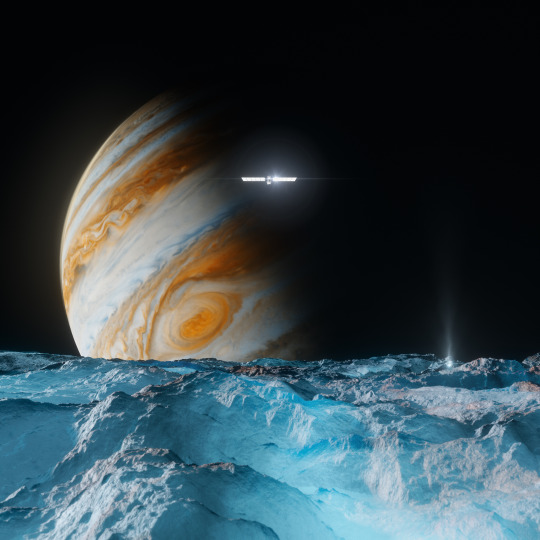
Hurry! You Can Catch a Ride to Jupiter with NASA
Well, at least your name can.
One of the planet Jupiter’s largest and most intriguing moons is called Europa. Evidence hints that beneath its icy shell, Europa hides an ocean of liquid water – more water than all of Earth’s oceans combined. In 2024, our Europa Clipper robotic spacecraft sets sail to take a closer look…and when it launches, your name can physically be aboard! Here’s how:
youtube
NASA’s Message in a Bottle campaign invites people around the world to sign their names to a poem written by the U.S. Poet Laureate, Ada Limón. The poem connects the two water worlds — Earth, yearning to reach out and understand what makes a world habitable, and Europa, waiting with secrets yet to be explored.
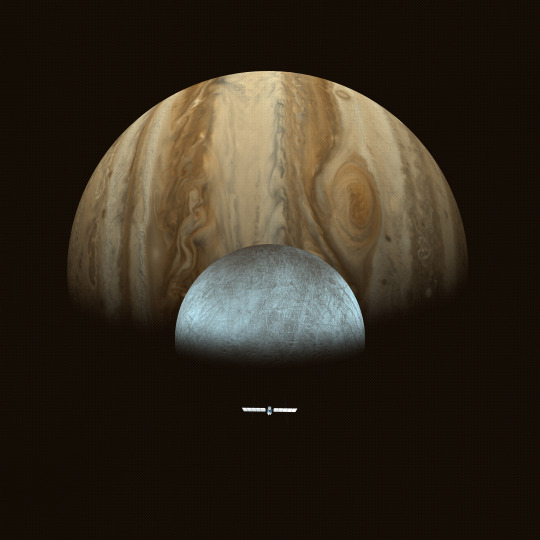
The poem will be engraved on Europa Clipper, along with participants' names that will be physically etched onto microchips mounted on the spacecraft. Together, the poem and names will travel 1.8 billion miles to the Jupiter system.
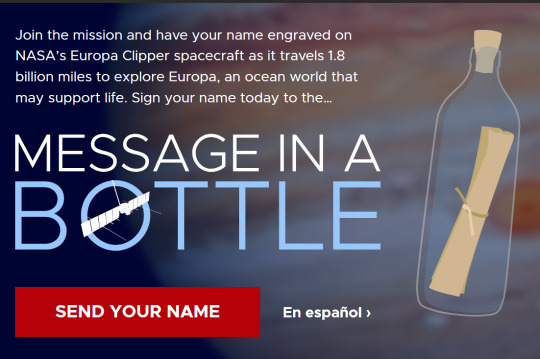
Signing up is easy! Just go to this site to sign your name to the poem and get on board. You can send your name en español, too. Envía tu nombre aquí.
The Europa Clipper launch window opens in October 2024, but don’t wait – everyone’s names need to be received this year so they can be loaded onto the spacecraft in time. Sign up by Dec. 31, 2023.
We hope you’ll be riding along with us! Follow the mission at europa.nasa.gov.
Make sure to follow us on Tumblr for your regular dose of space!
4K notes
·
View notes
Text
https://www.instagram.com/reel/CxYDkafxqs9/?igshid=NzZhOTFlYzFmZQ==
1 note
·
View note
Text
0 notes
Text
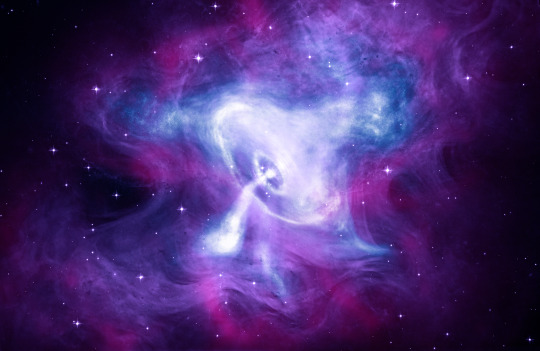
Navigating Deep Space by Starlight
On August 6, 1967, astrophysicist Jocelyn Bell Burnell noticed a blip in her radio telescope data. And then another. Eventually, Bell Burnell figured out that these blips, or pulses, were not from people or machines.

The blips were constant. There was something in space that was pulsing in a regular pattern, and Bell Burnell figured out that it was a pulsar: a rapidly spinning neutron star emitting beams of light. Neutron stars are superdense objects created when a massive star dies. Not only are they dense, but neutron stars can also spin really fast! Every star we observe spins, and due to a property called angular momentum, as a collapsing star gets smaller and denser, it spins faster. It’s like how ice skaters spin faster as they bring their arms closer to their bodies and make the space that they take up smaller.
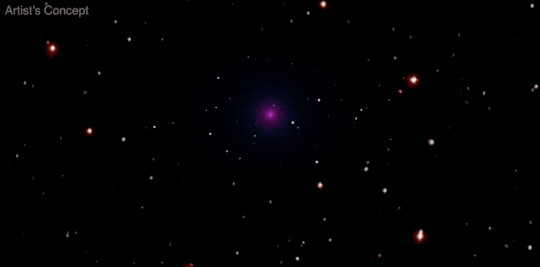
The pulses of light coming from these whirling stars are like the beacons spinning at the tops of lighthouses that help sailors safely approach the shore. As the pulsar spins, beams of radio waves (and other types of light) are swept out into the universe with each turn. The light appears and disappears from our view each time the star rotates.
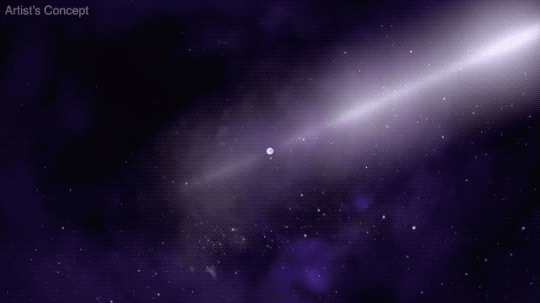
After decades of studying pulsars, astronomers wondered—could they serve as cosmic beacons to help future space explorers navigate the universe? To see if it could work, scientists needed to do some testing!
First, it was important to gather more data. NASA’s NICER, or Neutron star Interior Composition Explorer, is a telescope that was installed aboard the International Space Station in 2017. Its goal is to find out things about neutron stars like their sizes and densities, using an array of 56 special X-ray concentrators and sensitive detectors to capture and measure pulsars’ light.
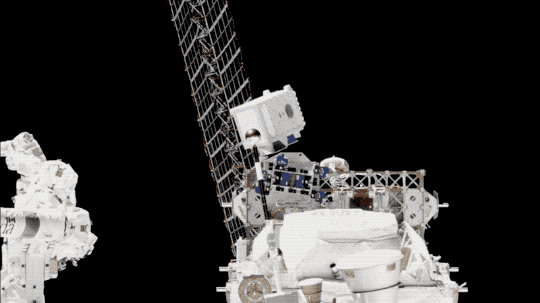
But how can we use these X-ray pulses as navigational tools? Enter SEXTANT, or Station Explorer for X-ray Timing and Navigation Technology. If NICER was your phone, SEXTANT would be like an app on it.
During the first few years of NICER’s observations, SEXTANT created an on-board navigation system using NICER’s pulsar data. It worked by measuring the consistent timing between each pulsar’s pulses to map a set of cosmic beacons.
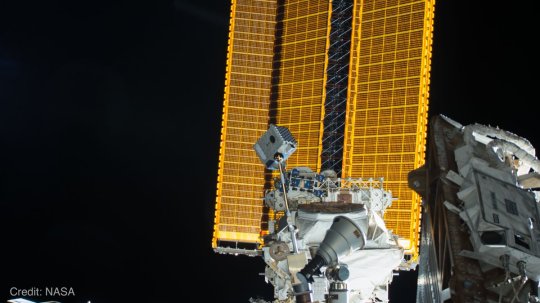
When calculating position or location, extremely accurate timekeeping is essential. We usually rely on atomic clocks, which use the predictable fluctuations of atoms to tick away the seconds. These atomic clocks can be located on the ground or in space, like the ones on GPS satellites. However, our GPS system only works on or close to Earth, and onboard atomic clocks can be expensive and heavy. Using pulsar observations instead could give us free and reliable “clocks” for navigation. During its experiment, SEXTANT was able to successfully determine the space station’s orbital position!
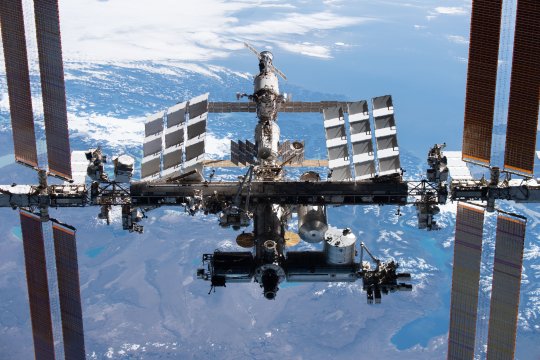
We can calculate distances using the time taken for a signal to travel between two objects to determine a spacecraft’s approximate location relative to those objects. However, we would need to observe more pulsars to pinpoint a more exact location of a spacecraft. As SEXTANT gathered signals from multiple pulsars, it could more accurately derive its position in space.
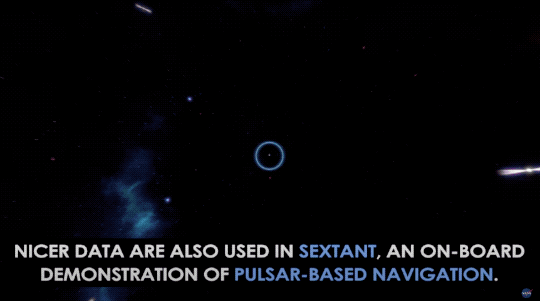
So, imagine you are an astronaut on a lengthy journey to the outer solar system. You could use the technology developed by SEXTANT to help plot your course. Since pulsars are reliable and consistent in their spins, you wouldn’t need Wi-Fi or cell service to figure out where you were in relation to your destination. The pulsar-based navigation data could even help you figure out your ETA!
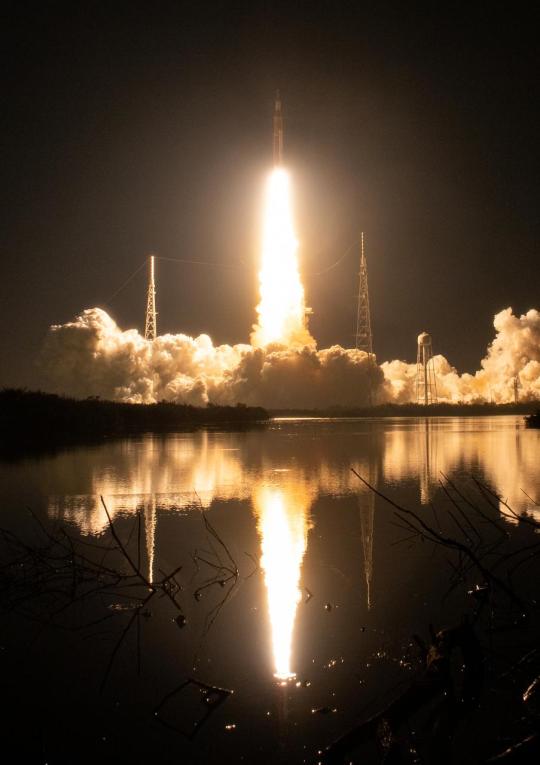
None of these missions or experiments would be possible without Jocelyn Bell Burnell’s keen eye for an odd spot in her radio data decades ago, which set the stage for the idea to use spinning neutron stars as a celestial GPS. Her contribution to the field of astrophysics laid the groundwork for research benefitting the people of the future, who yearn to sail amongst the stars.
Keep up with the latest NICER news by following NASA Universe on X and Facebook and check out the mission’s website. For more on space navigation, follow @NASASCaN on X or visit NASA’s Space Communications and Navigation website.
Make sure to follow us on Tumblr for your regular dose of space!
4K notes
·
View notes
Text
1 note
·
View note
Text
1 note
·
View note
Text
instagram
1 note
·
View note
Text
instagram
3 notes
·
View notes
Text
1 note
·
View note
Photo

Had a fun evening talking about the ISS and the NASA Artemis program! Grayson Elementary invited me to speak as part of their STEAM Night. The kids and parents were really into it. Thanks to Mrs. Frost for having me for a 2nd year! #explorepage #STEM #STEAM #Artemis #SLS #Orion #space #spaceflight #WeAreGoing #Moon #graysongeorgia #cityofgrayson #gwinnettcounty (at Grayson, Georgia) https://www.instagram.com/p/CqCIae4OqMT/?igshid=NGJjMDIxMWI=
#explorepage#stem#steam#artemis#sls#orion#space#spaceflight#wearegoing#moon#graysongeorgia#cityofgrayson#gwinnettcounty
0 notes
Text
instagram
Fun iPhone capture this evening... Orion The Hunter, Taurus The Bull, The Planet Mars, The International Space Station, and The Pleiades.
#explorepage #space #astronomy #iss #internationalspacestation #orion #taurus #thepleiades #solarsystemambassador
#solarsystemambassador#space#explorepage#astronomy#iss#mars#backyardastronomy#internationalspacestation#georgia#Instagram
0 notes
Text
Today, I want to take a moment to recognize the achievements of Judith Resnik, an American astronaut who made history as the second American woman in space. Resnik was born on April 5, 1949, in Akron, Ohio, and earned a bachelor's degree in electrical engineering from Carnegie Mellon University in 1970. She went on to earn a Ph.D. in electrical engineering from the University of Maryland in 1977.
Resnik was selected by NASA in 1978 to be a mission specialist in the space shuttle program. She first flew aboard the space shuttle Discovery in 1984 as part of the crew of mission STS-41D. During this mission, Resnik helped deploy three satellites and conducted various experiments in space. She later flew aboard the space shuttle Challenger in 1986 as part of the crew of mission STS-51L. Tragically, this mission ended in disaster when the Challenger was destroyed shortly after liftoff, killing all seven crew members, including Resnik.
Judith Resnik was a brilliant scientist and a trailblazer for women in the field of space exploration. Her contributions to the space shuttle program and her legacy as a pioneering astronaut will never be forgotten.
This is her flightsuit worn while training.
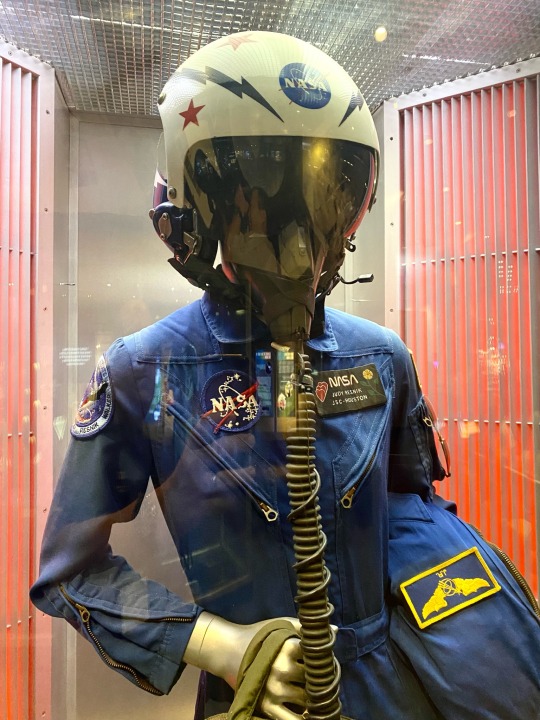
#NASA #seec2023 #johnsonspacecenter #spacecenterhouston #STEM #astronaut #WomenInSTEM #SolarSystemAmbassador
3 notes
·
View notes
Text
instagram
#explorepage#nasa#space#solarsystemambassador#astronomy#greenville#telescope#observatory#planetarium#Instagram
0 notes
Text
NASA's Neutral Buoyancy Lab: The Ultimate Underwater Simulator for Astronauts
NASA’s Neutral Buoyancy Lab (NBL) is a state-of-the-art underwater facility located in Houston, Texas. It serves as an underwater simulation environment for astronauts to train for spacewalks and other extravehicular activities (EVAs). The NBL is one of the most advanced training facilities in the world and plays a critical role in preparing astronauts for the challenges they will face in space.
The NBL is a massive indoor pool that is over 200 feet long, 100 feet wide, and 40 feet deep. It contains a full-scale mock-up of the International Space Station (ISS) and other space structures, allowing astronauts to practice and perfect their spacewalking techniques in a controlled and safe environment. The pool is filled with over 6 million gallons of water, which provides a simulated weightless experience similar to that of space.
Astronauts are equipped with a full spacewalk suit, which provides them with life support and protection from the harsh conditions of space. The suit is buoyant, which makes it difficult for astronauts to move around in water. To overcome this challenge, the suit is weighted with lead weights to balance out the buoyancy, making it possible for astronauts to move around freely in the water. This process of weight balancing is called "neutral buoyancy," which gives the NBL its name.
The NBL is not only a training facility for spacewalking, but it is also used to test new spacewalk equipment and procedures. It allows engineers and scientists to observe how equipment and procedures perform in a simulated microgravity environment. This information is then used to make improvements and ensure the safety of astronauts in space.
One of the unique features of the NBL is its ability to simulate various lighting conditions, including daylight, nighttime, and the red lighting that is used during spacewalks. This capability allows astronauts to train for all types of spacewalking scenarios and ensures that they are well-prepared for any situation they may encounter in space.
In conclusion, NASA's Neutral Buoyancy Lab is a crucial component of astronaut training and space exploration. It provides a safe and controlled environment for astronauts to train for spacewalks and other EVAs, while also allowing engineers and scientists to test new equipment and procedures. The NBL plays a vital role in ensuring the success and safety of NASA's space missions.


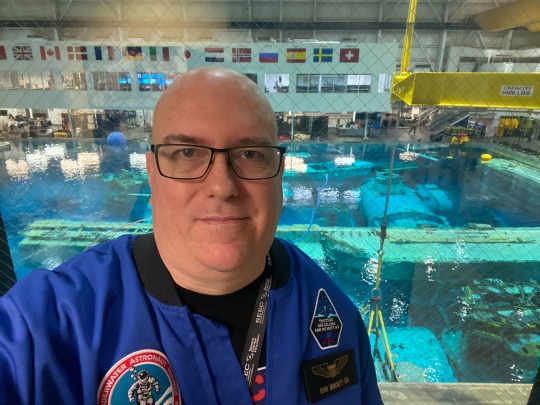
#nasa#space#solarsystemambassador#iss#stem#moon#internationalspacestation#explorepage#artemis#spaceflight#johnson space center#astronaut#training#spacewalk#EVA
2 notes
·
View notes
Text
0 notes
Photo

Great fun talking to kids and their parents at Trip Elementary School’s STEM Night! The kids learned about NASA Artemis, the International Space Station, and the JWST! #space #STEM #Artemis #SolarSystemAmbassador #spacescience https://www.instagram.com/p/Cn5rbfXuG6y/?igshid=NGJjMDIxMWI=
1 note
·
View note